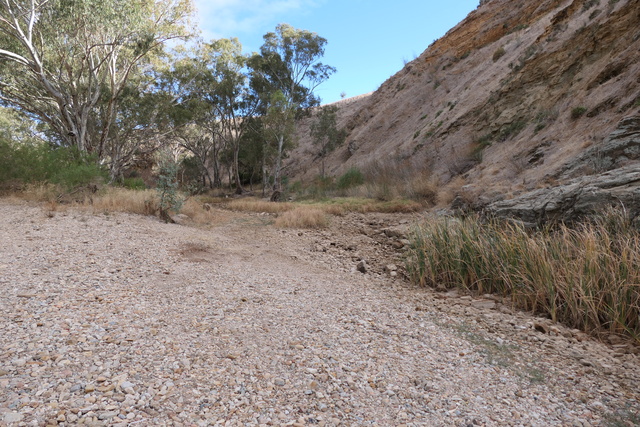The traditional Anzac Day break has passed and the big dry continues. Dry sowing is in full swing for quite a few farmers with feed, canola, lentils and oats being popular grains for dry sowing.
Farmers are hoping for a substantial rain event in May. The formation of a La Nina may mean a wet spring but crops still need moisture to get out of the ground.
A May break is far from unusual, and whilst people love to bang on about an Anzac Day break, it is not really that common. Expect to see more dust in the next couple of weeks.
Growers hate dry sowing as it either substantially reduces the effectiveness of pre-sowing herbicides or takes them off the table altogether.
Whilst you save on knockdown herbicides, you also lose the ability to control the first flush of weeds cheaply at sowing when you do not get to sow into a decent moisture profile.
According to Des McArdle, the season break will be in a fortnight because the roos in the mallee have started to have joeys.
Giving birth to joeys is a sure sign of rain to follow within three weeks, and Des told me this a week ago. So according to my maths, that is a mid-May break.
However, the Rocks Reserve springs have still not risen yet and that too is a sure sign of rainfall. Some of the lower springs have sprung but the bigger ones upstream have not yet kicked in, according to Wakefield River expert Peter McPharlin.
I am still leaning toward mid-May, so giddy up, kick the tyres and light some fires.
Next generation of SA grain leaders sought
Grain Producers SA (GPSA) has announced the establishment of a Young Grain Producers Committee (YGPC). The purpose of this committee is to foster the next generation of leaders and policy makers within the South Australian grain industry.
GPSA recognises the invaluable insights and fresh perspectives young farmers can bring to the table, ensuring their voices are heard in shaping policies and driving innovation.
The YGPC will serve as a platform for young farmers aged 18 to 45 to actively engage in policy development, leadership initiatives and industry advocacy. They will report directly to the GPSA board.
Grain producers aged in the target range who are passionate about the future of the SA grains industry are encouraged to apply. There will be six positions available for active grain growers and up to two positions for grain industry members in the supply chain.
Visit www.grainproducerssa.com.au for further info.
The results are in!
The annual GPSA survey results have been collated. These provide an interesting snapshot as to the state and positivity of South Australia’s grain sector.
This year, 300 grain growers responded to the survey – a response rate higher than previous years. By my reckoning, this figure equates to about 7-8 per cent of South Australia’s grain growers.
According to various statistical websites, this represents a valid number of growers, which in turn will provide a pretty clear reflection on how grain growers feel across the state.
You can visit the GPSA website for the full rundown, but here is a summary of the results.
If you were not one of those that responded, and you disagree with this summary, I would suggest you participate in next year’s survey!
One of the most significant findings was the high number (more than 30 per cent) of grain production businesses which are undergoing succession. \
Whilst challenging, this provides new opportunities for the industry. Other key findings of the survey were:
94 per cent of grain producers feel their business is profitable and sustainable.
76 per cent are positive about the future of the South Australian grain industry.
40 per cent identified finding, attracting, and retaining staff as challenging.
78 per cent said they were better prepared now than they were for the last drought.
67 per cent say operating costs remain the biggest challenge.
33 per cent identified technology adoption as their biggest opportunity.
64 per cent said actively managing spray drift when spraying is a high priority.
48 per cent do not have reliable connectivity.
22 per cent reported having an accident with powerlines.
GPSA chief executive officer Brad Perry also highlighted some other interesting responses:
“Despite the challenges posed by high input costs (67 per cent) and climate stress (20 per cent), most respondents reported a profitable year for their farming operations in 2023, buoyed by three consecutive strong harvests in most areas of the state.
“The survey results also showed that concerns persist regarding the future of the Grassland Fire Danger Index of 35 measured at two metres, the state of regional roads, and ongoing market access.”







